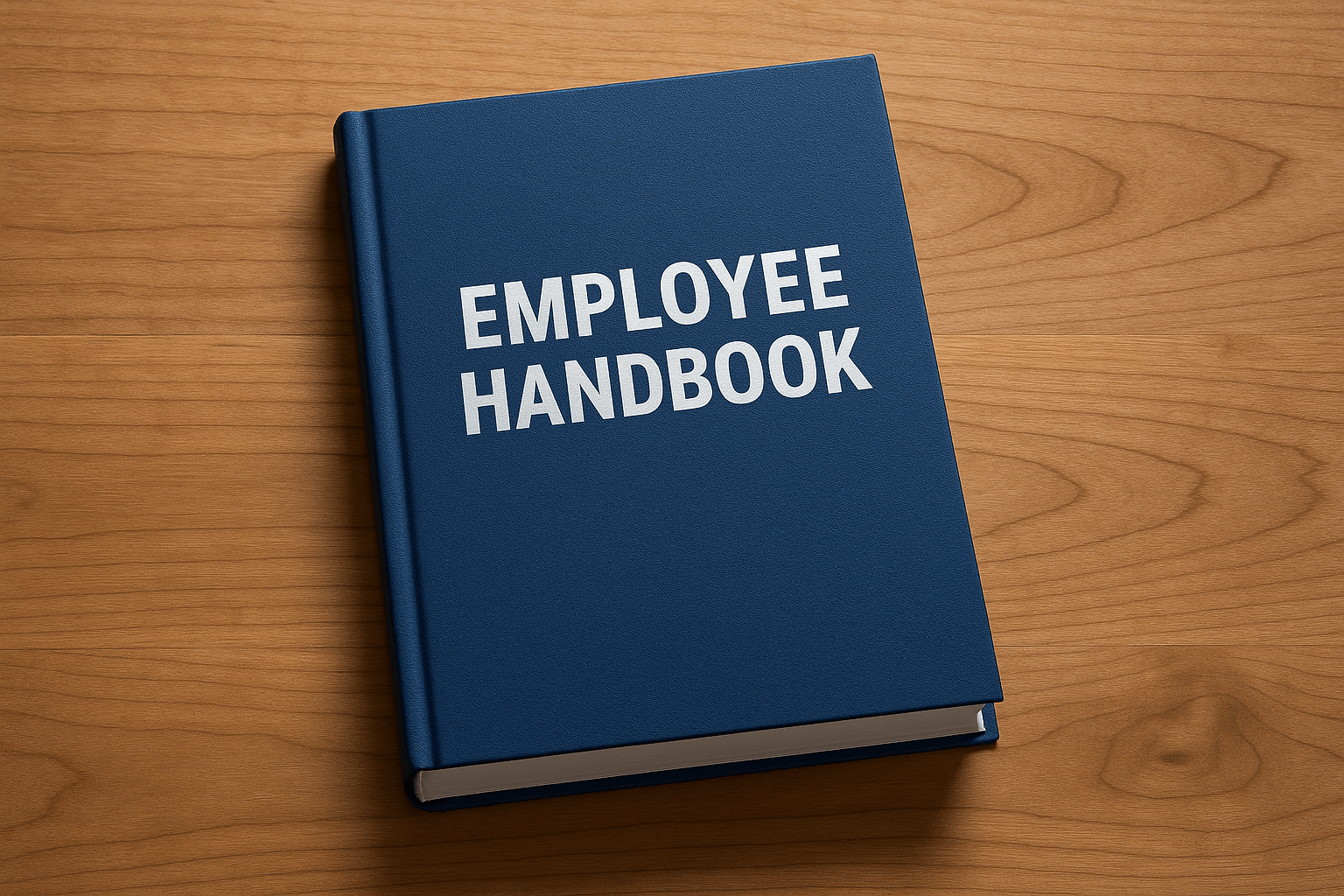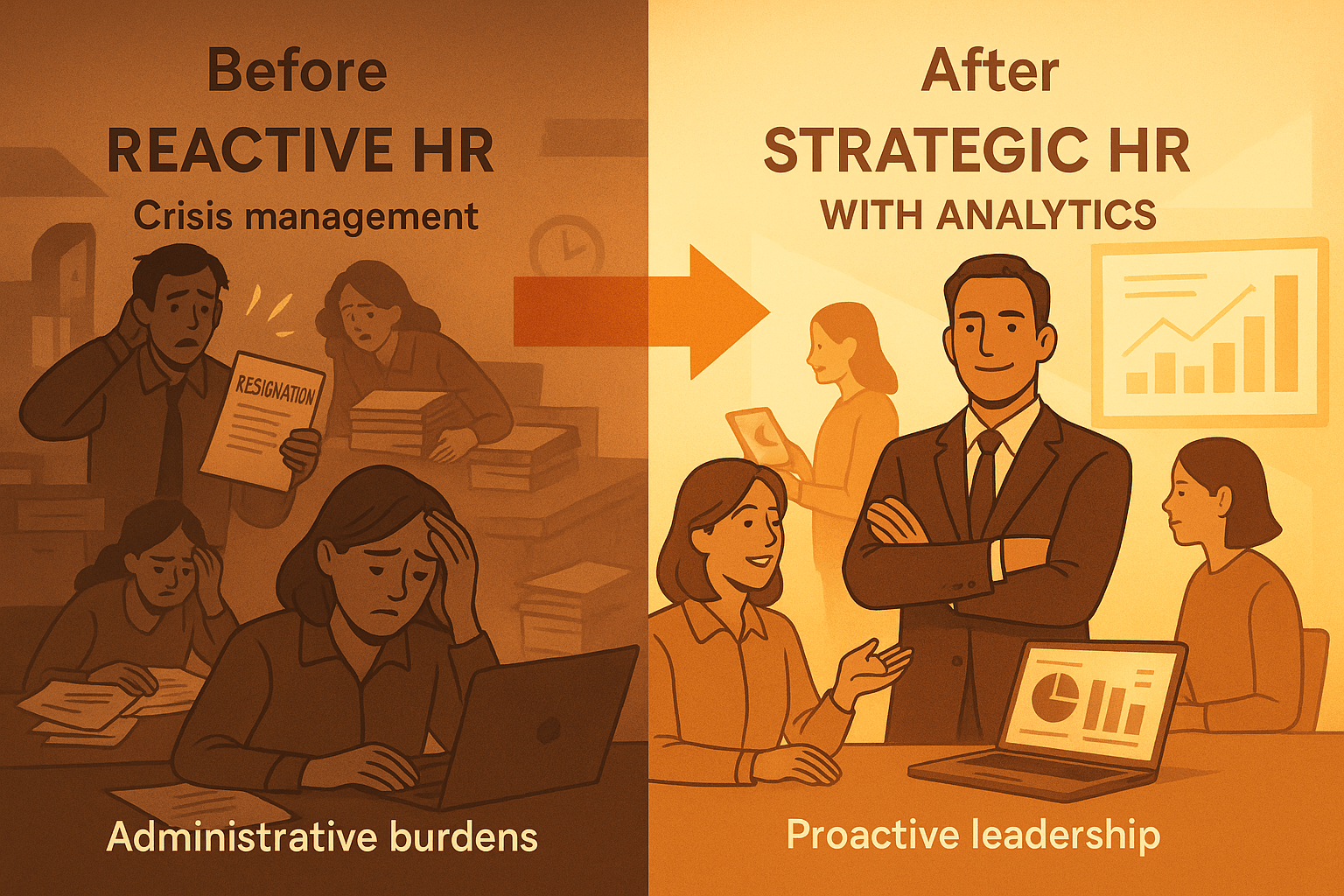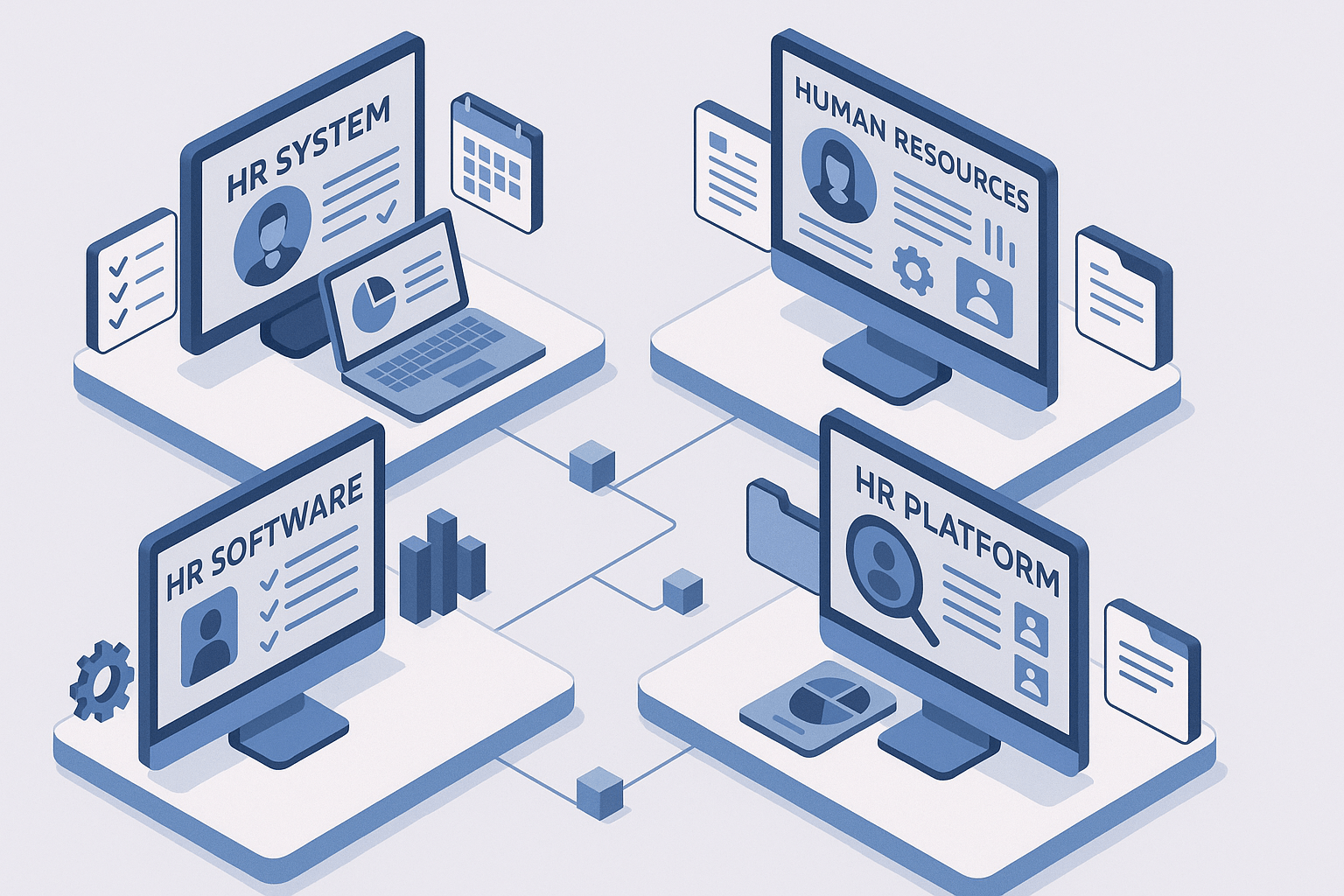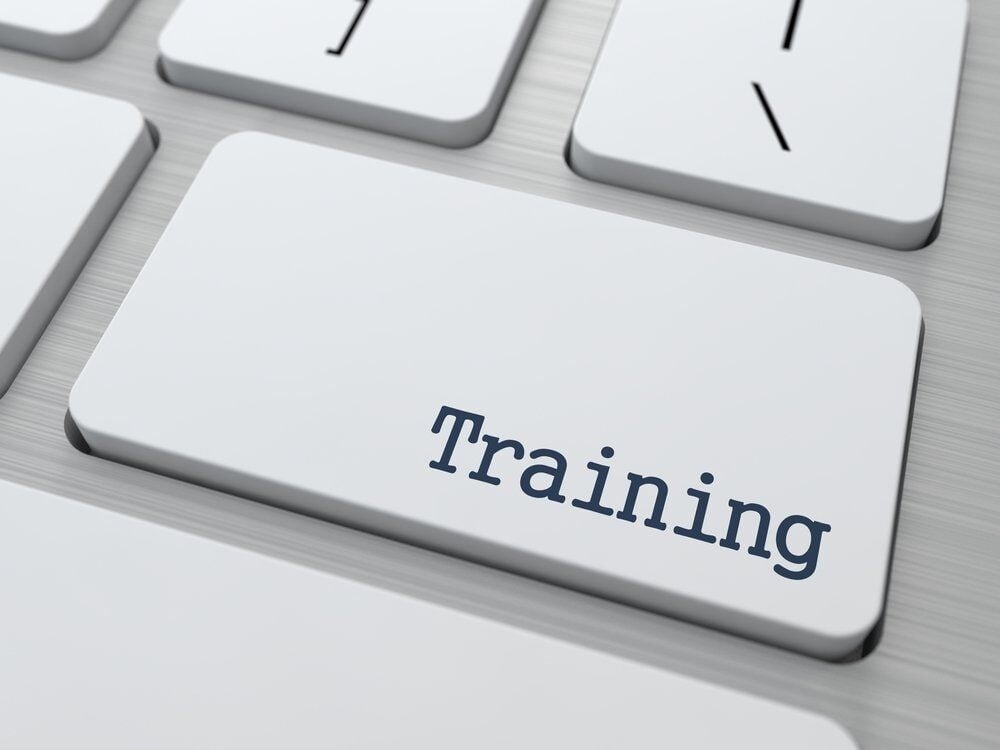Best Practices for Creating an Employee Handbook in 2025
August 20th, 2024
6 min read

As an HR professional, one of your key responsibilities is ensuring that employees clearly understand the company's policies, procedures, and expectations. The consequences of a new or current employee not having this information easily accessible can lead to a cascade of negative impacts on both individual performance and organizational efficiency. An employee handbook serves as a crucial tool in achieving this goal. It acts as a comprehensive guide for new and existing employees, helping them navigate their organizational roles and responsibilities.
You understand the importance of a well-crafted employee handbook, but the challenge of including all essential details without getting overwhelmed can be daunting. We get it—at Lift HCM, we've supported countless organizations in creating practical employee handbooks that clarify policies and procedures and foster a positive work environment. Our expertise and experience in the HCM industry have shown us what works and what doesn’t regarding employee handbooks. Our advice includes the latest industry trends, legal requirements, and best practices.
In this article, we will guide you through what to include in an employee handbook, backed by examples, references, and an employee handbook template to help get you started. Let's dive in!
Download the Employee Handbook template by clicking on the link at the bottom of this page.
Table of Contents
- What is an Employee Handbook, and Why Do You Need It?
- What Goes Into an Employee Handbook?
- Introduction and Company Overview
- Employment Policies
- Compensation and Benefits
- Work Schedule and Attendance
- Code of Conduct and Professional Behavior
- Performance Management and Employee Development
- Health, Safety, and Security
- Conclusion and Acknowledgement
- What Should Be Avoided in an Employee Handbook?
- Do Businesses Have to Have an Employee Handbook?
- Employee Handbook Tips
- Does Your Business Have an Effective Employee Handbook?
What is an Employee Handbook, and Why Do You Need It?
An employee handbook is a critical document that outlines your company's policies, procedures, and expectations. It serves as a clear and comprehensive guide to company policies, procedures, and expectations, benefiting both employers and employees. For employers, it provides legal protection, ensures consistency, streamlines onboarding, reduces turnover, and helps manage risks. Employees benefit from clear expectations, fair treatment, and a resource for addressing workplace issues. A well-crafted handbook fosters a positive and productive work environment by outlining company culture, benefits, and employee responsibilities.
What Goes Into an Employee Handbook?
No two companies are alike, which means no two employee handbooks should be identical. A successful handbook is tailored to your organization's specific needs and personality. It should clearly communicate your company's rules, expectations, and culture. A well-crafted handbook serves as a valuable resource for employees and helps ensure consistent application of company rules and practices.
That said, most employee handbooks include similar topics and types of information. Below are eight common sections in employee handbooks.
1. Introduction and Company Overview
Begin your employee handbook with a warm welcome message from the company's leadership team. This sets a positive tone and demonstrates the organization's commitment to its employees. Follow this with an overview of the company's history, mission, vision, and values. This section helps employees understand the bigger picture and how their roles contribute to the overall success of the organization.
Example: "Welcome to Lift HCM! We are thrilled to have you as a part of our team. At Lift HCM, we are dedicated to providing innovative solutions to our clients while fostering a collaborative and inclusive work environment. Our mission is to..."
2. Employment Policies
In this section, outline the company's employment policies, including equal opportunity, anti-discrimination, and anti-harassment policies. Clearly state that the organization does not tolerate any form of discrimination or harassment based on race, color, religion, gender, sexual orientation, age, disability, or any other protected characteristic. Provide examples of unacceptable behavior and the consequences of violating these policies.
Example: "Lift HCM is an equal opportunity employer. We do not tolerate discrimination or harassment based on race, color, religion, gender, sexual orientation, age, disability, or any other protected characteristic. Examples of unacceptable behavior include..."
Reference: U.S. Equal Employment Opportunity Commission Prohibited employment policies/practices
3. Compensation and Benefits
Provide an overview of the company's compensation structure, including pay periods, overtime policies, and any performance-based bonuses or incentives. Clearly explain the benefits package, including health insurance, retirement plans, paid time off, and any other perks or benefits offered by the organization.
Example: "Lift HCM offers a competitive compensation package, which includes a base salary, performance-based bonuses, and a comprehensive benefits package. Our benefits include..."
Reference: Society for Human Resource Management
4. Work Schedule and Attendance
Clearly outline the company's work schedule, including regular business hours, flexible work arrangements (if applicable), and attendance expectations. Explain the procedure for reporting absences, requesting time off, and the consequences of excessive absenteeism or tardiness.
Example: "Lift HCM's regular business hours are from 9:00 AM to 5:00 PM, Monday through Friday. We offer flexible work arrangements, such as telecommuting and flexible hours, on a case-by-case basis. If you need to be absent from work..."
Reference: U.S. Department of Labor Work hours
5. Code of Conduct and Professional Behavior
Establish clear expectations for professional behavior and conduct in the workplace. This section should cover topics such as dress code, communication guidelines, social media use, and conflict resolution. Provide examples of acceptable and unacceptable behavior to help employees understand the company's expectations.
Example: "At Lift HCM, we expect all employees to maintain a high level of professionalism and adhere to our code of conduct. This includes dressing appropriately for the workplace, communicating respectfully with colleagues and clients, and using social media responsibly..."
Reference: The importance of a code of conduct in the workplace: Ethics & Compliance Initiative
6. Performance Management and Employee Development
Explain the company's performance management process, including performance reviews, goal-setting, and feedback mechanisms. Highlight the organization's commitment to employee development and provide information on training opportunities, mentoring programs, and career advancement paths.
Example: "Lift HCM is committed to the growth and development of our employees. We conduct annual performance reviews to provide feedback, set goals, and identify areas for improvement. We also offer various training programs and mentoring opportunities to support your professional growth..."
Reference: Performance Management Handbook-A Guide for Managers/Supervisors and Employees U.S. Department of the Interior
7. Health, Safety, and Security
Outline the company's policies and procedures related to workplace safety, emergency preparedness, and security protocols to prioritize the health, safety, and security of your employees. Provide information on reporting accidents, injuries, or unsafe conditions and emphasize the importance of maintaining a secure work environment.
Example: "At Lift HCM, the health, safety, and security of our employees are of utmost importance. We have established the following policies and procedures to ensure a safe and secure work environment..."
Reference: Occupational Safety and Health Administration Employer responsibilities
8. Conclusion and Acknowledgement
Conclude your employee handbook by reiterating the importance of adhering to the company's policies and procedures. Encourage employees to reach out to their supervisors or the HR department if they have any questions or concerns. Include an acknowledgment form for employees to sign, confirming that they have read, understood, and agree to abide by the handbook's contents.
Example: "We hope this employee handbook serves as a valuable resource throughout your employment with Lift HCM. If you have any questions or concerns, please don't hesitate to reach out to your supervisor or the HR department. Please sign the acknowledgment form below to confirm that you have read, understood, and agree to abide by the policies and procedures outlined in this handbook."
What Should Be Avoided in an Employee Handbook?
While it’s essential to include comprehensive information in your employee handbook, there are certain pitfalls to avoid:
Overly Restrictive Language: Avoid language that could be interpreted as overly restrictive or binding. For example, using the word "guarantee" or "promise" when referring to employment terms can create unintended legal obligations.
Inconsistent Information: Ensure that all policies in the handbook are consistent with other company documents and practices. Inconsistencies can lead to confusion and potential legal issues.
Outdated Policies: Regularly review and update the handbook to ensure it reflects current laws, regulations, and company practices. An outdated handbook can be misleading and expose the company to legal risks.
Lack of Flexibility: Avoid including rigid policies that don't allow flexibility. For instance, a policy that does not allow exceptions or managerial discretion can lead to employee dissatisfaction or legal challenges.
Do Businesses Have to Have an Employee Handbook?
While no federal law mandates that businesses must have an employee handbook, having one is strongly recommended. An employee handbook helps to communicate company policies and expectations clearly, provides legal protection in case of disputes, and serves as a reference guide for employees. Additionally, certain states or industries may have specific regulations that require the documentation of certain policies, which can be efficiently handled through a handbook.
Employee Handbook Tips
- Keep it clear and concise by using simple language and avoiding jargon.
- Cover important topics like code of conduct, anti-discrimination, leave policies, and benefits.
- Make it easily accessible by providing both digital and physical copies if possible.
- Ensure legal compliance by reviewing local and federal laws to ensure your policies are up-to-date and compliant.
- Include a disclaimer stating that the handbook is not a contract and policies may change.
- Get employee acknowledgment by having employees sign that they've received and read the handbook.
- Review and update regularly by keeping the handbook current with changing laws and company policies.
Does Your Business Have an Effective Employee Handbook?
Creating an effective employee handbook requires careful consideration of your organization's unique needs, culture, and values. By including the essential elements discussed in this blog post, along with clear examples and references, you can develop a comprehensive resource that guides employees and promotes a positive, productive work environment.
Remember to review and update your employee handbook regularly to ensure that it remains current and aligned with any changes in laws, regulations, or company policies. By investing time and effort into crafting a well-structured and informative employee handbook, you can set your employees up for success and foster a strong, engaged workforce.
Download the Employee Handbook Template!
Please note that this article does not cover all possible scenarios, and any discussions or viewpoints should not be considered legal advice. Readers are advised to consult with legal professionals for specific legal guidance.
.jpg?width=233&height=155&name=composition-with-book-light-bulb(1).jpg)
If you are not yet ready to speak with a team member, you may
find these resources helpful:
Caitlin Kapolas is a results-driven professional with a strong background in account management and retail. She is dedicated to improving client experiences and building lasting relationships. Caitlin excels in identifying client needs, resolving issues, and implementing customized solutions that drive value. Her effective communication skills ensure high client satisfaction and loyalty, making her a trusted advisor and partner in meeting client needs with precision and professionalism.
Topics:









.webp?width=1080&height=1080&name=HR%20blocks(1).webp)
.jpeg?width=1024&height=1024&name=happy%20employees%20working%20together%20outside%20in%20the%20fall%20time(1).jpeg)








.jpeg?width=1344&height=768&name=Employee%20Retention%20Credit%20in%20amiercan%20english%20spelled%20across%20blocks(1).jpeg)


